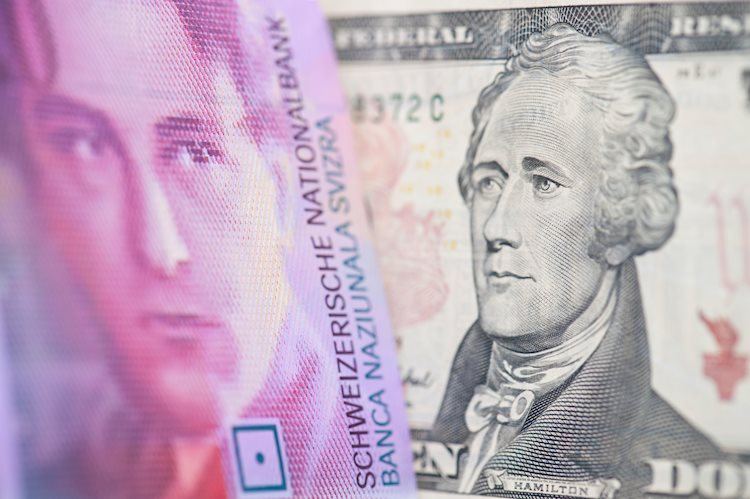USD/CHF, the currency pair involving the US dollar and the Swiss franc, is demonstrating signs that it may be reversing its trend. A bearish Two-Bar reversal pattern has formed, indicating a potential shift in the upward trend that has been in place for the last five weeks. Additionally, the pair has broken the trendline of the uptrend three times, providing further evidence of a possible reversal.
The daily chart of USD/CHF shows the bearish Two-Bar reversal pattern that occurred on Monday and Friday. This pattern typically indicates a reversal in sentiment, with a longer-than-average green candle followed by a similar length red candle. This pattern often suggests near-term weakness and the potential for a reversal in trend. The technical analysis also shows that the trendline for the October rally has been broken and redrawn multiple times, further supporting the case for a reversal.
On the 4-hour chart, USD/CHF is continuing to show signs of a possible downtrend. A break below the November 4 low of 0.8615 would provide confirmation of further downside movement and establish a bias towards a downtrend. If this level is broken, the next target for the pair is around 0.8550, where the 50-day Simple Moving Average is located. This level could serve as a potential support area for the pair.
Traders and investors should keep a close eye on USD/CHF in the coming days to see if the reversal continues to play out. Monitoring key levels, such as the November 4 low and the 50-day Simple Moving Average, can help provide insight into the potential direction of the pair. Analyzing technical patterns and trends can also help inform trading decisions and risk management strategies.
In conclusion, USD/CHF is displaying signs that it may be reversing its trend, with a bearish Two-Bar reversal pattern and a break of the uptrend trendline. A break below the November 4 low could confirm a downtrending bias, with a potential target of around 0.8550. Traders should stay vigilant and continue to monitor the pair for further developments that may impact their trading decisions.










